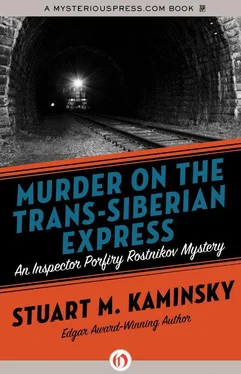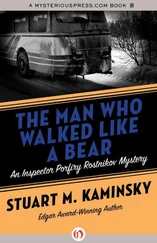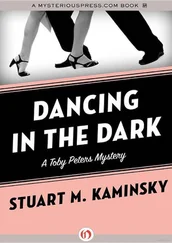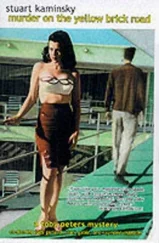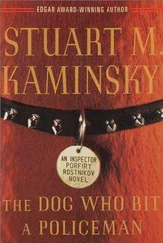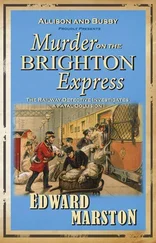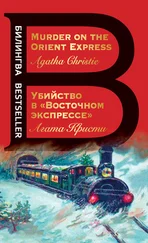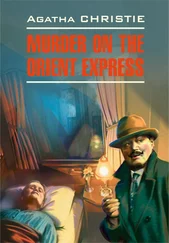Stuart Kaminsky - Murder on the Trans-Siberian Express
Здесь есть возможность читать онлайн «Stuart Kaminsky - Murder on the Trans-Siberian Express» весь текст электронной книги совершенно бесплатно (целиком полную версию без сокращений). В некоторых случаях можно слушать аудио, скачать через торрент в формате fb2 и присутствует краткое содержание. Год выпуска: 2012, Жанр: Полицейский детектив, на английском языке. Описание произведения, (предисловие) а так же отзывы посетителей доступны на портале библиотеки ЛибКат.
- Название:Murder on the Trans-Siberian Express
- Автор:
- Жанр:
- Год:2012
- ISBN:нет данных
- Рейтинг книги:3 / 5. Голосов: 1
-
Избранное:Добавить в избранное
- Отзывы:
-
Ваша оценка:
- 60
- 1
- 2
- 3
- 4
- 5
Murder on the Trans-Siberian Express: краткое содержание, описание и аннотация
Предлагаем к чтению аннотацию, описание, краткое содержание или предисловие (зависит от того, что написал сам автор книги «Murder on the Trans-Siberian Express»). Если вы не нашли необходимую информацию о книге — напишите в комментариях, мы постараемся отыскать её.
Murder on the Trans-Siberian Express — читать онлайн бесплатно полную книгу (весь текст) целиком
Ниже представлен текст книги, разбитый по страницам. Система сохранения места последней прочитанной страницы, позволяет с удобством читать онлайн бесплатно книгу «Murder on the Trans-Siberian Express», без необходимости каждый раз заново искать на чём Вы остановились. Поставьте закладку, и сможете в любой момент перейти на страницу, на которой закончили чтение.
Интервал:
Закладка:
The Railroad Construction Committee estimated the cost of road building at 350 million gold rubles. To keep costs down, the committee established conditions for the Ussuriysk and western Siberia sections. The proposed width of the roadbed was narrowed. Ballast layer was made thinner. Lighter rails were used. Major construction was to be used only on the biggest bridges. Smaller bridges were built of wood. The Circum-Baikal loop to the south of Lake Baikal alone needed two hundred bridges and thirty-three tunnels.
Rostnikov stepped into the corridor. Traffic had thinned. A conductor was walking through, calling out that the train would be taking off. Other Russian trains might be late, but not the Trans-Siberian Express.
Rostnikov went in search of Sasha Tkach. He passed the large white metal samovar in the corridor which provided hot water at all times for drinks and instant foods for those who did not want to spend the time or money going to the dining car.
He found that Sasha was in the same car, an end compartment. He had been placed with three French businessmen.
It appeared that Pankov had done his work. Rostnikov spoke English and was with two Americans and an English-speaking Russian. Sasha’s French was nearly perfect. Rostnikov did not pause as he passed the door. He did not pause till he was on the narrow platform between two cars. Sasha joined him.
“Our adventure begins,” said Rostnikov.
The most difficult problem in building the Trans-Siberian Express was not the distance, cost, or dangers. It was labor. The problem was dealt with by hiring workers in different sections and transporting them to Siberia, each group working separately, all destined to join. In western Siberia there were as many as fifteen thousand workers from western Russia, European Russia. The Zaaylalskaya section employed forty-five hundred workers from all areas. And in middle Siberia, the most dangerous of the three legs of the railroad, most of the workers were convicts and soldiers. Throughout the construction sites were peasants, youths seeking adventure, men who thought they could make a steady living which they could send or bring home to their families.
No one knows how many workers died from floods, plague, sustained temperatures of fifty degrees below zero in the winter and over one hundred degrees in the summer, cholera, landslides, anthrax, bandits who came in packs and stripped smaller work teams of their money and clothes before killing them, and tigers made winter-hungry.
Some estimate as many as ten thousand people died building the railroad. Others say this figure is far too low.
The train lurched a few feet forward. Rostnikov and Sasha Tkach steadied themselves on the metal doors. The train lurched three more times and began to move, very slowly, so slowly that they were aware of their movement at first only by the passing images on the platform, the people waving good-bye, tourist-agency representatives sighing with relief, uniformed police, the arches of the station itself.
Then, with a thrust, the train began to pick up speed.
“No one will sleep for hours,” Rostnikov said. “Excitement. Almost everyone will rise early to look through their windows. The first movement out will be at lunchtime. Most will want to go to the dining car. It may be the only time they go. That is when we begin our search.”
Sasha nodded.
“You looked at your timetable?”
“I did,” said Sasha. “There are so many stops. More than one hundred and thirty, stops every few hours. We can’t check at every one. We would get no sleep.”
“Most of the stops are only for a few minutes so people can stretch their legs, buy some trinkets, chocolates. We will take turns watching to see if someone gets off with a suspect suitcase or someone of interest gets on. It is most likely that the transaction will take place at one of the larger stops. We have three days till we get to Novosibirsk,” said Rostnikov as the train rattled forward, the lights of Moscow glowing a faint yellow through the falling snow outside the window.
It was not much of a plan, but Rostnikov did not intend to simply wait.
“We begin our search now,” he said. “We walk through the train, noting any luggage or people who might be suspicious. Most important, look for a person who does not leave his or her compartment or does so only with a suitcase.”
The chances of success seemed very slim to Sasha Tkach, but the responsibility was not his and the chief inspector did not appear to be concerned. But then Porfiry Petrovich was not a man who showed excitement.
Rostnikov pointed to his left, the direction he wanted Sasha to take, and he turned to the right, toward the car from which they had come.
“Porfiry Petrovich,” Sasha said. “My mother is planning to get married.”
Rostnikov hesitated. “Perhaps the sun will burn out sooner than we think,” he said. “Tell me more in the morning.”
The sun? What did the sun have to do with it? Sasha wondered. On more than one occasion in the past, Sasha had given serious consideration to the possibility that the chief inspector had moments of great eccentricity.
Almost all the work done on the railroad was by hand. Axes, saws, shovels, miners’ hacks, wheelbarrows. Despite the primitive tools and weather, 600 kilometers of railway were built every day. Not only were thousands of miles of track laid, but one-hundred-million cubic feet of earth was moved. In just one 230-kilometer span, the Circum-Baikal Railway, fifty protection barriers against landslide had to be constructed, thirty-nine tunnels blasted and reinforced, 14 kilometers of support walls built with concrete. Just the cost of the tunnels with support walls was more than ten million rubles.
In October 26, 1897, temporary traffic began from Vladivostok to Khabarovsk. In 1898, the western-Siberian section from Chelybansk to Novosibrsk was put into operation. The middle-Siberian section from Ob’River to Irkutsk was completed in 1899. In 1905 regular traffic began. Only one track had been laid. There had not been enough money to lay a track running in each direction.
Pavel Cherkasov was more than slightly bothered by the coincidental appearance of the barrel of a man who shared the compartment with him and the two old Americans. Pavel recognized Chief Inspector Rostnikov of the office of Special Investigation. There was no doubt. He recognized the face, and his impression was confirmed by the man’s distinct limp.
He had never met Rostnikov, and he was quite sure Rostnikov had never seen him or a photograph of him. Pavel had a computer. It was not with him. Far too large and he did not like carrying laptops. Pavel was a professional. He kept track of supposed friends and potential enemies. There were web sites with photographs of the Washtub. People had e-mailed him photographs via scanner of the policeman and many others whom it would behoove him to recognize. Pavel, in turn, had occasionally put out some information on people and places to avoid or be wary of. And Pavel had an excellent memory.
The possibility of the detectives being on the train by chance was slim to nonexistent, though it was certainly a possibility. However, the chance of the policeman being in the same compartment defied the odds. It was most likely that Rostnikov had some information on the transaction. It might be very little but it might be enough to present some danger.
No matter. He would find out how much help Rostnikov had with him. He would guard the blue duffel bag containing the money, put it, if necessary, in a safer place than the compartment carrier. He had a number of thoughts about that. It would all be done tomorrow, after breakfast.
He lifted the duffel bag to his lap, zipped it open, and removed a pair of blue pajamas and a white robe. He did this casually, laying the items on the seat next to him, wanting them to see but pay no attention. Even if Rostnikov was watching him, it was most unlikely that he would consider the boldness of Pavel’s carrying more than half a million British pounds under his nightclothes and underwear.
Читать дальшеИнтервал:
Закладка:
Похожие книги на «Murder on the Trans-Siberian Express»
Представляем Вашему вниманию похожие книги на «Murder on the Trans-Siberian Express» списком для выбора. Мы отобрали схожую по названию и смыслу литературу в надежде предоставить читателям больше вариантов отыскать новые, интересные, ещё непрочитанные произведения.
Обсуждение, отзывы о книге «Murder on the Trans-Siberian Express» и просто собственные мнения читателей. Оставьте ваши комментарии, напишите, что Вы думаете о произведении, его смысле или главных героях. Укажите что конкретно понравилось, а что нет, и почему Вы так считаете.
